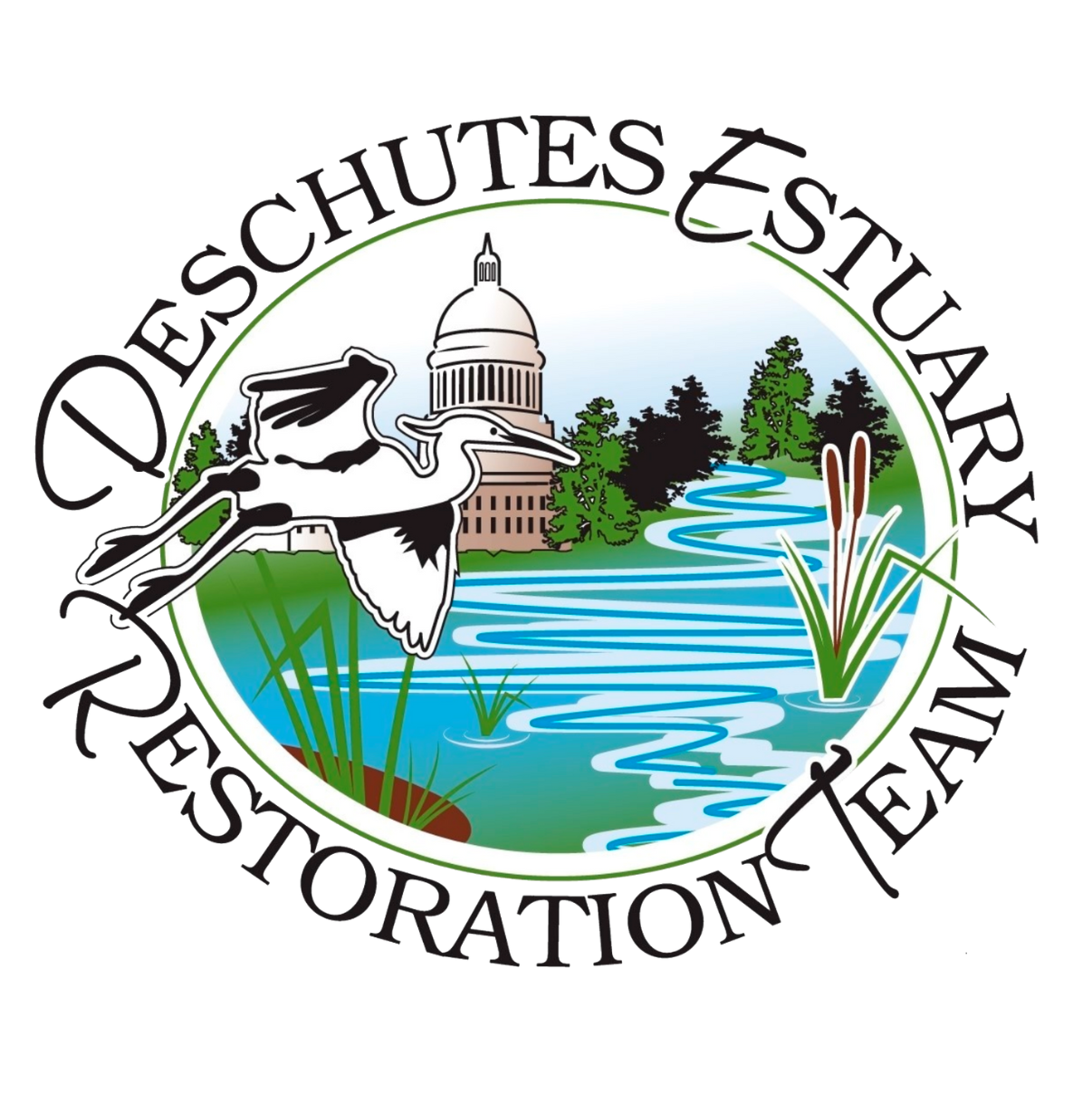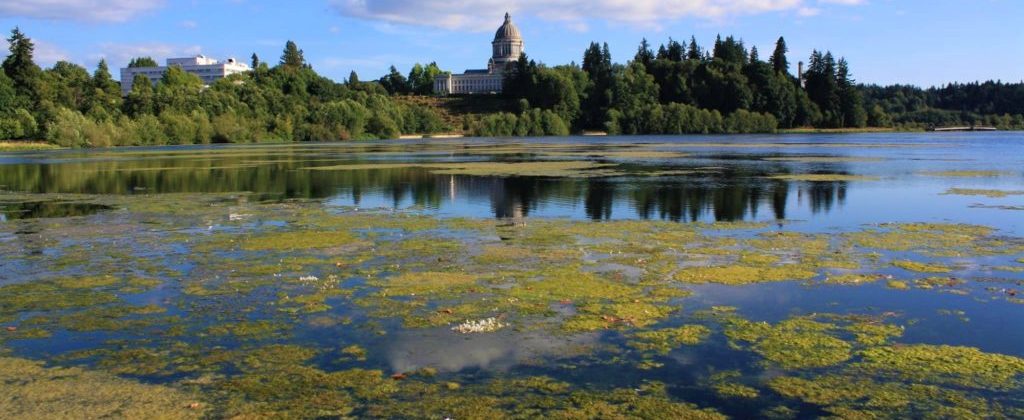Director’s Note, Fall 2022
It’s autumn, now, and besides the onslaught of pumpkin spice, gorgeous foliage, and being able to get our favorite jackets out again, this means…. It’s almost time for the Department of Enterprise Services to announce THE FINAL DECISION in the Environmental Impact Statement process for the future management of Capitol Lake / Deschutes Estuary. This is the moment that has been on our minds since the very beginning of DERT… and here we are, almost!
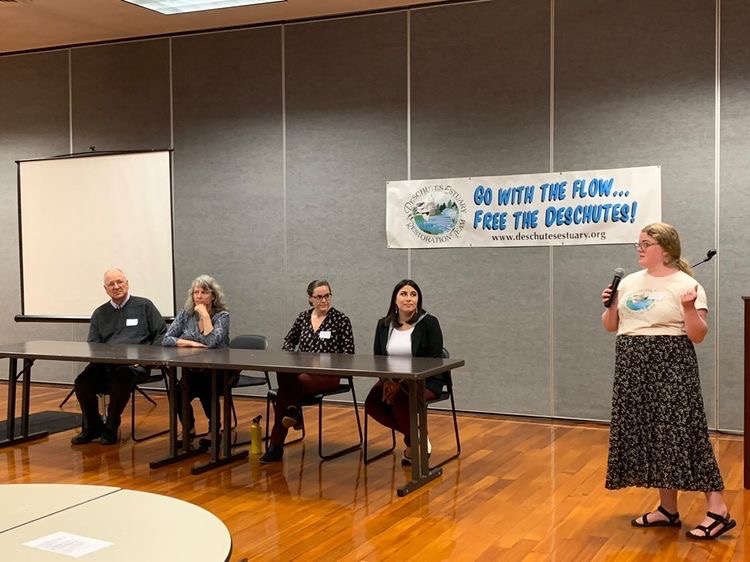
at our Climate Change Community Forum 2022
South Puget Sound is at an ecological crossroad. Water quality must be improved dramatically if the Deschutes watershed ecosystem is to be sustained. We know this, and we work towards this daily, alongside our funding and collaboration partners, and community members like you (thank you!).
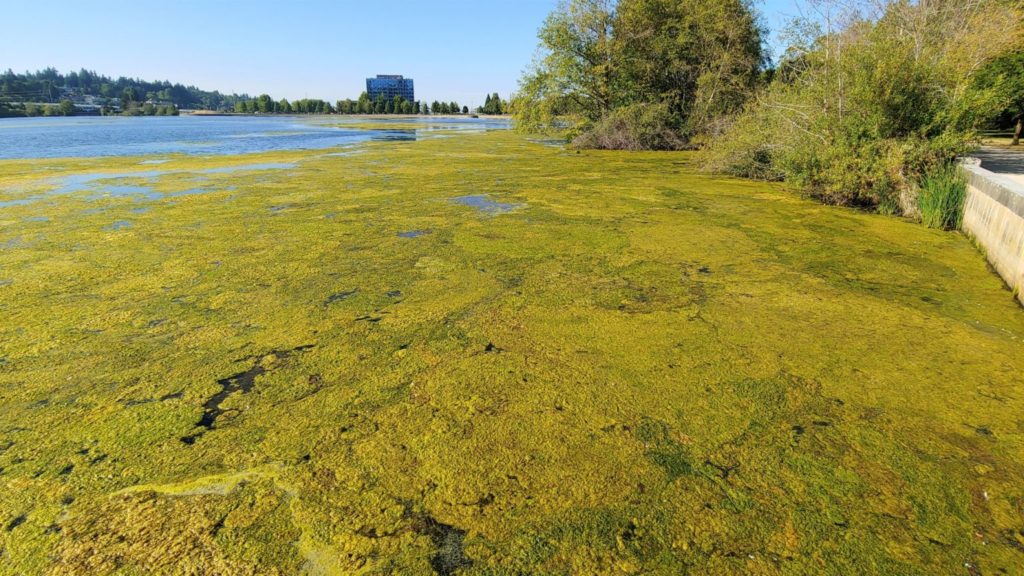
DERT: Our History
It all started with the dam, but it won’t end until the effects of the dam have been mitigated entirely.
In 1951, the thriving Deschutes Estuary was buried by a reflecting lake created by the construction of the 5th Avenue dam. The water in the stagnant lake has been so toxic, that swimming and boating has been banned due to biological hazards. Additionally, the burial of the estuary violates the Medicine Creek Treaty protecting the rights to and access of the Squaxin Island Tribe to their ancestral grounds, the Steh-Chass.
Instead of a thriving estuary, downtown Olympia showcases a stagnant and degraded lake that is steadily filling with sediment, is closed to the public (including Squaxin tribal members), suffers from algae blooms, and low levels of dissolved oxygen.
The Deschutes River (River) winds its way from the Cascade Mountain foothills, sourcing at an elevation of 3,870 feet, and flows through 52 miles of countryside.
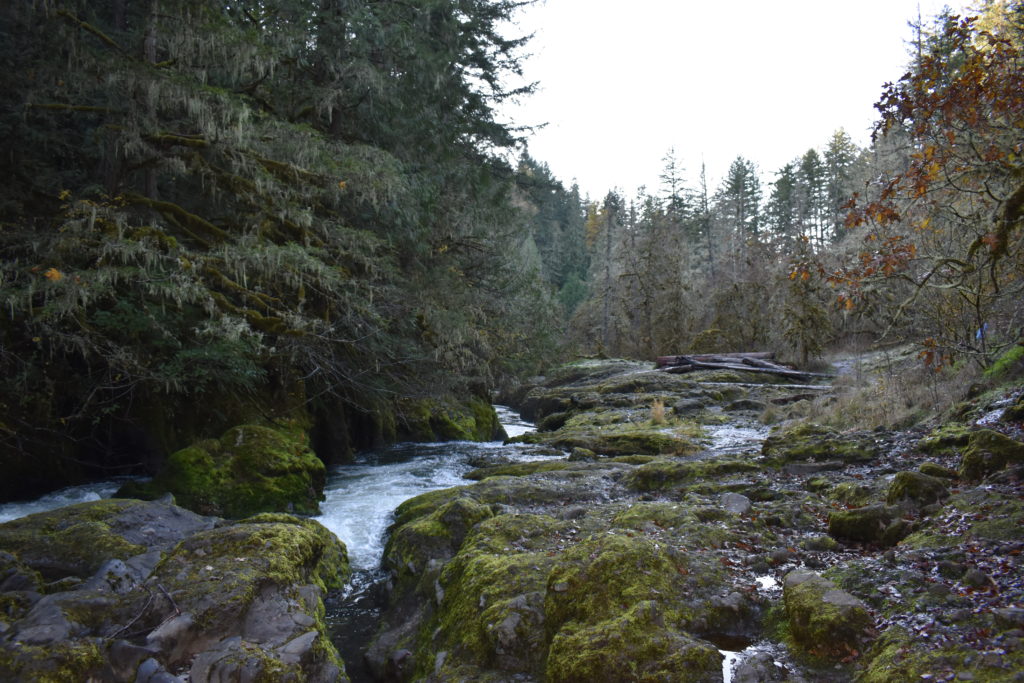
The river’s mouth was once a thriving and abundant brackish estuary, sustaining people, fish, wildlife, forests and other interconnected forms of life. The River and its 143 tributaries form the Deschutes Watershed. Geographic features of the watershed include rivers, streams, forest, lakes, wetlands, prairie, marine bays and the open sea of South Puget Sound and Salish Sea. Human-produced features include homes, farms and pastures, urban communities, railroads, parks, public access sites, roads and highway and bridges. It is a beautiful and abundant watershed providing a sense of place for those who live and use its abundant resources. But it is in trouble.
The Deschutes Watershed is pressured with increasing water quality problems, water quantity uncertainty, development pressures, shoreline armoring and development and a dam on Fifth Avenue at the mouth of the river. The man-made Capitol Lake, formed by the dam in 1951, has become a shallow, warm pond that is filling with pollutants and invasive plants and species. The dam at the river’s mouth—owned by the State of Washington– contributes approximately 50% of the nutrient pollution currently associated with low dissolved oxygen levels in Budd Bay and South Sound.
In eleven major Puget Sound estuaries, 80% of the original salt marsh and mudflat habitat have been lost. Restoration of the Deschutes estuary would add 260 acres of habitat. This area could give home to Coho, Chinook, and Chum salmon, Cutthroat trout, oysters and freshwater clams. Pacific blue herons, bald eagles, ravens, migratory birds, cormorants and more would benefit as well. The restoration study predicted that the main basin will be filled with water 80% of the time.
Restoring the Deschutes estuary would result in a lasting symbol that could be held up as an example of what is possible when people come together to restore their wildland-urban interface, the place where nature and the human built environment meet. Washington’s Capital city can lead our region down a better path – one that recognizes that our community is stronger and healthier when we protect the ecosystems that support us.
DERT advocates for the removal of Olympia’s 5th Avenue Dam and the full restoration of the Deschutes Estuary. DERT began organizing in 2009 with founding members Sue Patnude, David Peeler, and Zena Hartung. DERT has worked directly with key state agency leaders and legislators to encourage an honest and complete Environmental Impact Statement of alternatives to Capitol Lake; in addition to citizen education alongside other water protection advocates. We actively educate our community on the benefits of estuary restoration through water quality based educational programming. We envision a restored urban estuary and functioning riparian-estuarine ecosystem in the headwaters of Puget Sound.

The EIS process
A quick catch-up on the background of this issue, and what the EIS decision will mean:
- In 1951, the thriving Deschutes Estuary was buried by a reflecting lake created by the construction of the 5th Avenue dam.
- Instead of a thriving estuary, downtown Olympia showcases a stagnant and degraded lake that is steadily filling with sediment, is closed to the public, suffers from algae blooms, and low levels of dissolved oxygen.
- Capitol Lake—owned by the State of Washington– contributes approximately 50% of the nutrient pollution currently associated with low dissolved oxygen levels in Budd Bay and South Sound.
- DERT advocates for the removal of Olympia’s 5th Avenue Dam and the full restoration of the Deschutes Estuary. DERT began organizing in 2009 and became a 501(c)(3) non-profit in 2011.
- In 2016, stakeholders, in collaboration with Washington State Department of Enterprise Services (Enterprise Services), identified common goals that should be satisfied by any long-term management alternative. In 2018, Enterprise Services was directed by the State Legislature to develop an Environmental Impact Statement (EIS) that evaluates alternatives for long-term management.
- In 2019, DES launched a scoping period, the first step of the EIS process. During the scoping period, Enterprise Services and its consultants hosted public meetings, both in-person and online, and solicited comments from the public. Scoping concluded on Nov. 13, 2018. Over the 48-day scoping comment period, the project received more than 900 individual comments from 271 separate submissions, which were compiled into a report in February 2019.
- The Draft EIS was issued for public comment on June 30, 2021. The extended, 62-day comment period concluded on Aug. 29, 2021. The Draft EIS provides an objective summary of long-term management alternatives, the impacts and benefits of the alternatives over a 30-year time horizon, short-term impacts during construction, and potential mitigation measures.
Learn more about the EIS process here and here.
Recently:
On March 16, 2022, The Department of Enterprise Services (DES) announced that they had selected a preliminary preferred alternative on how to manage the mouth of the Deschutes River – the currently dammed estuary that formed Capitol Lake. The “preferred alternative” is the end result of the evaluation of alternatives under the State Environmental Protection Act (SEPA) that has been underway since 2016. Enterprise Services concluded that the Estuary Alternative is expected to best achieve project goals and represents a more durable decision than the other alternatives evaluated.
Here is the DES announcement:
Enterprise Services and the EIS Project Team have completed a robust evaluation of the alternatives against the preferred alternative selection criteria that are described in the Draft EIS and have identified the Estuary Alternative as the likely preferred alternative. Enterprise Services concluded that the Estuary Alternative is expected to best achieve project goals and represents a more durable decision than the other alternatives evaluated.
It is important to note that identifying a likely preferred alternative is not a final decision. Designation of a preferred alternative prior to issuance of the Final EIS in no way restricts final decisions.
It also does not alleviate the EIS Project Team of additional technical analyses that must still be completed for the Final EIS, in which the final decision will be presented on the preferred alternative. However, while some technical findings in the Final EIS will likely be revised, the changes are unlikely to be significant enough across the range of technical analyses to change the likely preferred alternative. It is expected that the likely preferred alternative will be confirmed as the preferred alternative in the Final EIS. “
The final EIS will be released this fall by October 31, 2022. (hopefully sooner!) Funding will be sought in the 2023-2025 Biennial Budget that will be developed and adopted in the long legislative session in 2023.
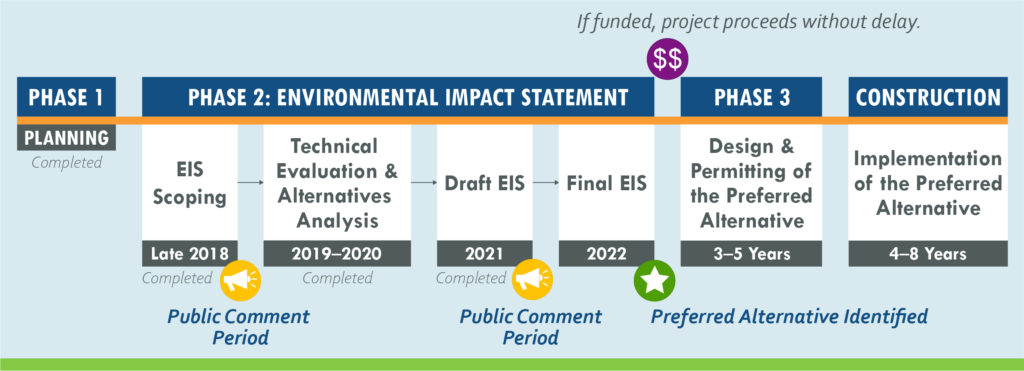
Why does this decision matter?
Reconnecting the Deschutes River with South Sound will promote the natural mixing of freshwater and marine water that makes estuaries among the most productive ecosystems on earth. Estuaries effectively filter and bind pollutants and excess nutrients, while providing immense carbon sequestration potential. The Deschutes Estuary can also help buffer rising tides caused by human-induced climate change. Invasive species will not thrive as easily in cooler water with higher saline content. Salmon populations in much of the Puget Sound will become stronger, as 260 acres of nurturing habitat for juvenile salmon will be restored.
Estuary restoration will not only enhance the environment, but it will provide green jobs, recreational activities, and ecotourism opportunities.
After the EIS decision, what’s next for DERT?
Established as a 501(c)3 in 2011, The Deschutes Estuary Restoration Team (DERT) is dedicated to protecting and restoring the Deschutes River Watershed from source to the Salish Sea.
We aim to educate the public about watershed issues and water quality issues with an intersectional environmental lens, so that they can be empowered to fiercely advocate for the right of the estuary to exist, and for community health and water quality improvement.

We want to see the 5th avenue dam removed, followed by the subsequent restoration of the Deschutes Estuary. We envision a restored urban estuary and functioning riparian-estuarine ecosystem in the headwaters of Puget Sound. More than a decade of grassroots advocacy by DERT and others pushed the current Environmental Impact Statement (EIS) into being done, which will identify the management plan for the Capitol Lake / Deschutes Estuary area. While we are waiting on the final EIS decision, we are continuing our work to encourage sense of place water quality awareness through volunteer involvement and coalition building with other water protection agencies and organizations. This ensures broad community support and action to push dam removal and estuary restoration forward past the EIS decision. When we break these goals into action items, this is broadly what our workplans revolve around:
- Strategic Planning
- Community Education and Engagement
- Water Quality Monitoring and Microplastics Research
- Involvement on Community Advisory Boards (such as WRIA 13, Deschutes Watershed Council, Alliance for a Healthy South Sound, Puget Soundkeeper Alliance, Waterkeeper Alliance Pacific Region, Local Good Governance Coalition, and more)

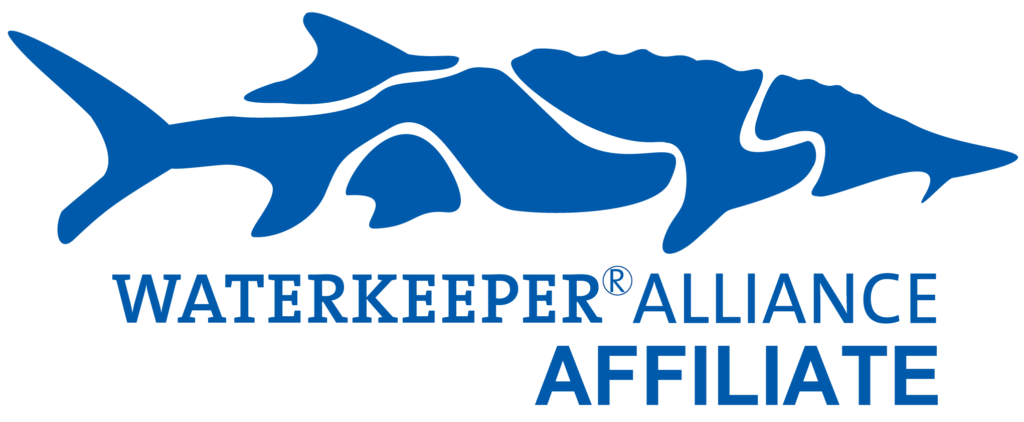
In 2020, DERT became an affiliate Waterkeeper – part of a global network dedicated to protecting everyone’s right to drinkable, fishable, swimmable water. DERT now has a robust South Sound Healthy Watershed Program working to involve the public through on-the-water events, community forums, online communication and direct participation in policy development.
As an affiliate of Puget Soundkeeper Alliance and member of the international Waterkeeper Alliance, one of DERT’s roles is to cultivate a presence as a protector and guardian of the watershed. The recent expansion of our outreach programs have broadened access to water quality education to individuals able to make a direct impact on the health of Puget Sound. Through our South Sound Healthy Watershed Program built in partnership with Puget SoundKeeper, we have expanded the scope of our citizen science water quality data collection and gained a more comprehensive understanding of water quality in the Deschutes Watershed (through testing with our YSI ProDSS sonde), particularly in relation to the Deschutes River TMDL and Budd Inlet’s status as one of the most polluted parts of Puget Sound. Involvement in pollution monitoring activities also develops a reverence for local ecosystem protection by seeing the water quality data first hand, in person, in turn building a sense of place and connection to the watershed. We will continue to collect this program during the dam removal process.
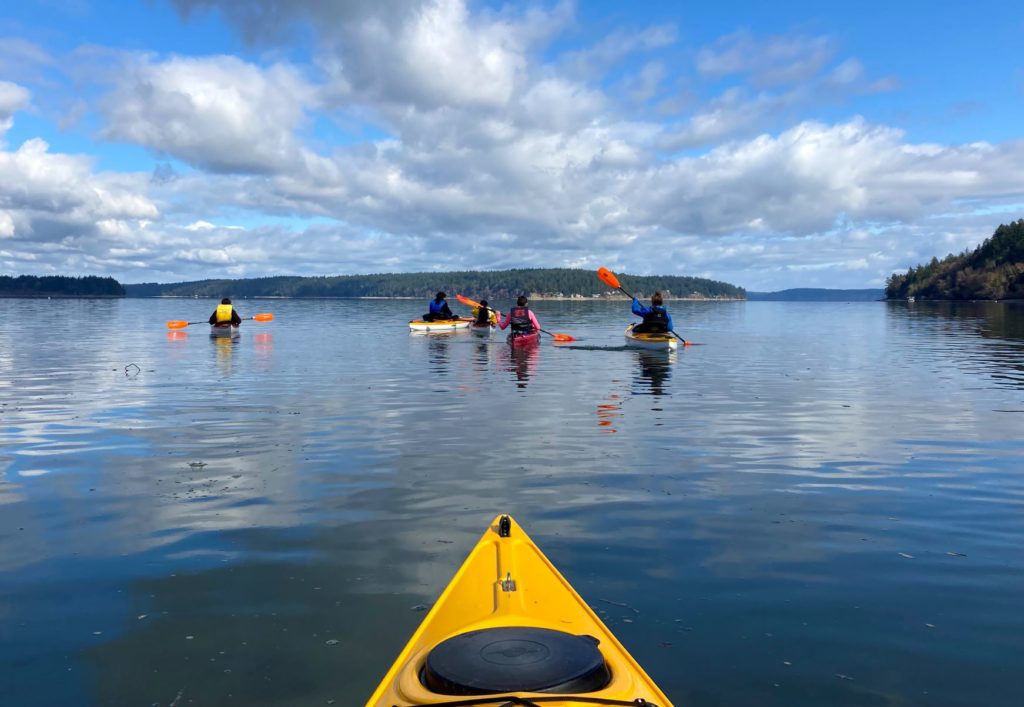
We are currently in talks with elected officials to develop the Deschutes Watershed Council; a broadly-based watershed group to develop and implement an action plan for following EIS recommendations. The Council would act collaboratively to implement recommendations arising from plans and studies to improve water resources, as well as identify and implement water management solutions on a regional scale that increase self-reliance, and reduce conflict to achieve social, environmental, and economic objectives.
We believe that restoration of the Deschutes Estuary will serve as a global example for urban watershed revitalization. If you support this mission, please get in touch with us to volunteer or donate. DERT has been a community supported organization from day one, and with your continued support, we can ensure a clear pathway to the future where Olympia is known for its greatest and most unique asset: a thriving and healthy urban estuary in the center of our city.
So, for now, we are holding our breath, waiting for the decision for dam removal. When the EIS decision comes out, let’s celebrate together at our annual auction. See you there!

Free the Deschutes!
–Paige
Please share this article with your pals!
Click here to check out our new Instagram
